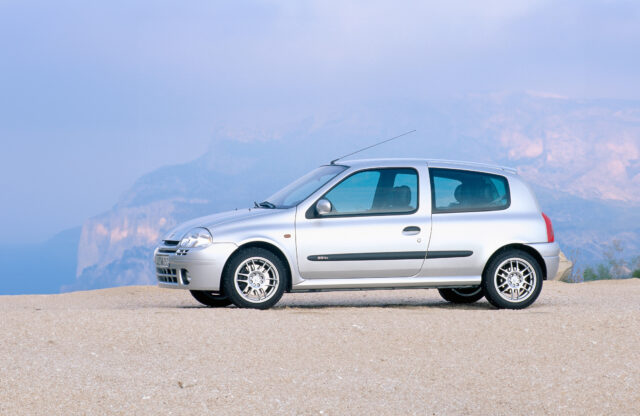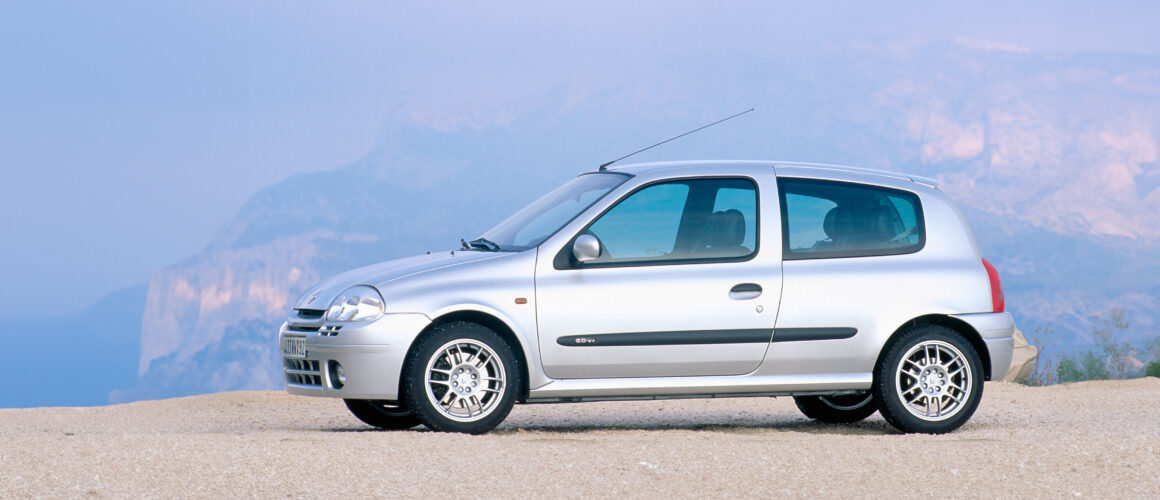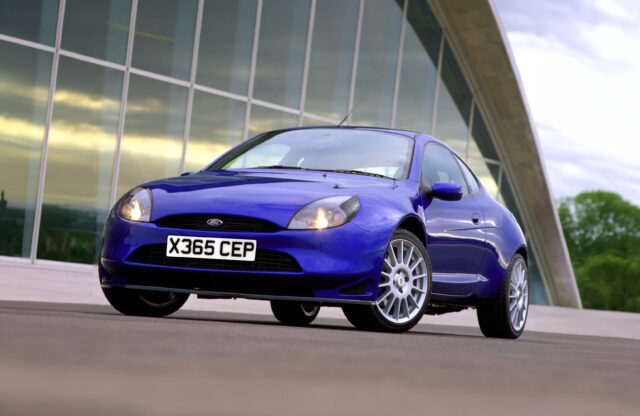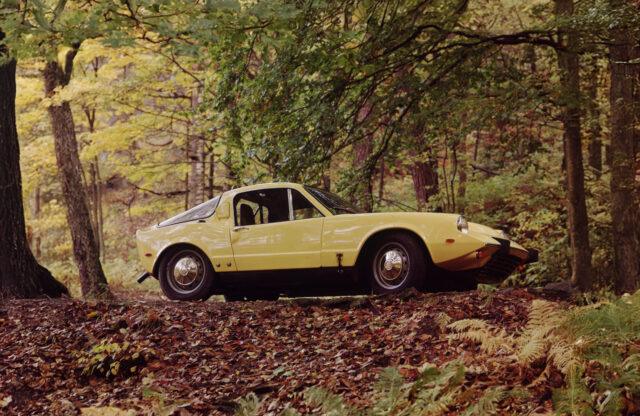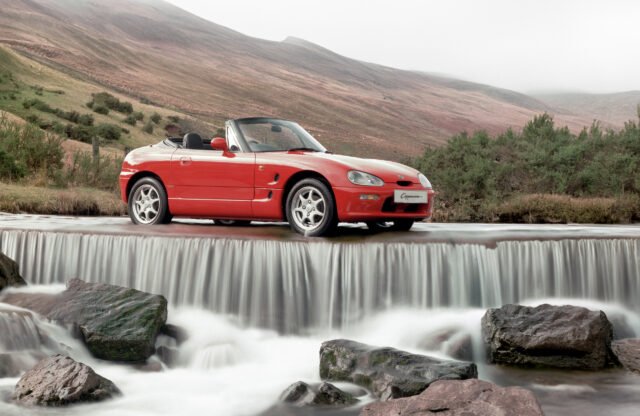Hot hatches have always been a particular French speciality, but Renault has enjoyed an almost unbroken chain of greatest hits. Any ‘Top 10’ list will most likely feature at least half-a-dozen Renaults, and somewhere near the top of that list will be the feisty Renaultsport 172 and 182 versions of the Mk2 Clio.
Although Renault was a pioneer of forced induction in the 1980s with the 5 GT Turbo, the hot Mk1 Clio 16v and even hotter Williams signalled a change of ethos. Gutsy multi-valve engines were the name of the game, and the ‘Va Va Voom’ Mk2 Clio would pick up where the ‘Nicole and Papa’ Mk1 Williams left off.
Like its predecessor, the 172 (pictured) was developed and built by Renaultsport in Dieppe. Launched at the beginning of the Millennium, it was powered by a tweaked version of Renault’s ‘saloon car’ 2.0-litre 16v F4R engine, fitted with variable valve timing to give 170bhp and 148lb ft. Wider front wings housed 15-inch OZ alloy wheels, while a half-leather, half-Alcantara interior looked slightly sporty. The real magic was in Renaultsport’s tuning of the chassis – firmed up with uprated springs and dampers, along with a quicker steering rack, it was sharp and very well balanced. Most important of all, it was huge fun!
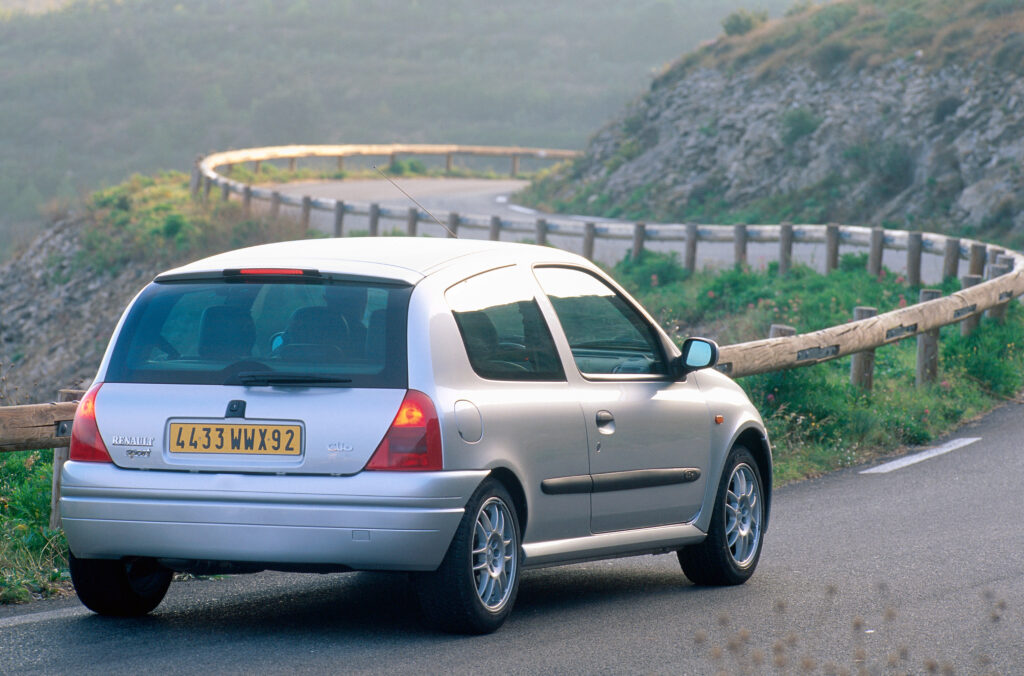
This model stayed in production for just over a year, before Renault introduced the facelifted ‘Phase 2’ 172. The standard offering became a little better equipped, with climate control, xenon headlights and fresh nose styling. With slightly firmer chassis settings and 16-inch wheels, the winning formula wasn’t altered too much. While this appealed slightly more to ‘regular’ buyers, Renaultsport decided also to build a hardcore, stripped-out Cup model. It did without the air-con and xenons, and even had the ABS system removed–plus many other small changes, such as a rear bench seat instead of split-fold–and as a result weighed 99kg less. The Cup-spec suspension was even lower and firmer, with a wider track, and the front bumper and rear spoiler were slightly different. Renault gained a lot of respect for offering the Cup, a much purer driver’s car, at a significant £2100 saving over the regular 172.
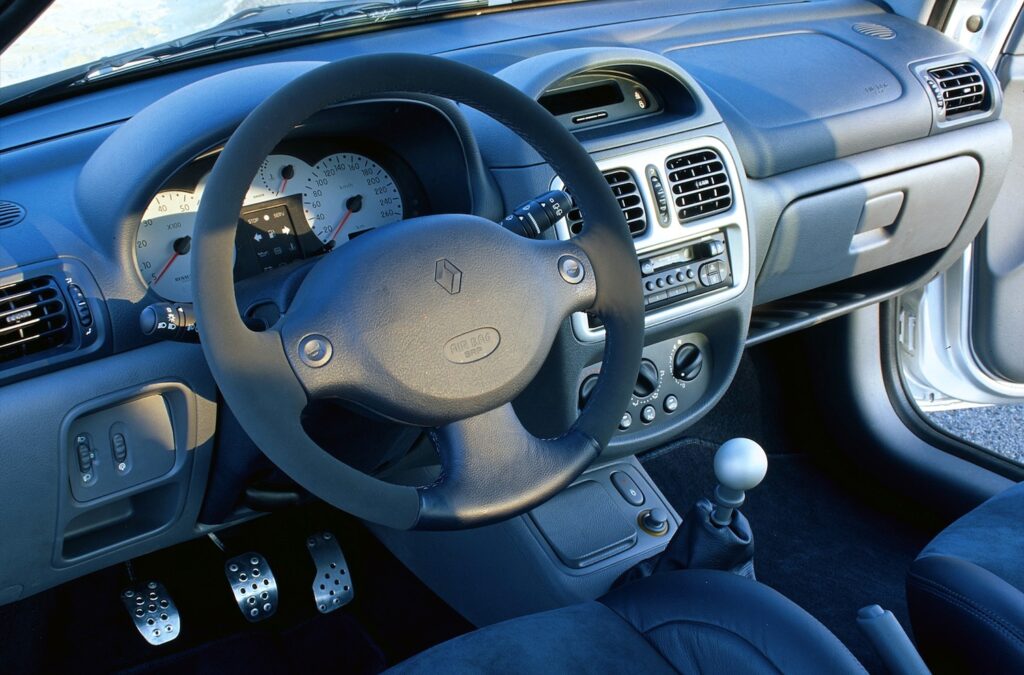
Next came the Clio 182 in 2004. A better-flowing twin-exit exhaust and a few other tweaks liberated another 10bhp. As before, the 182 was well-equipped as standard, but it could also be optioned with the Cup chassis set-up and spoilers. A dedicated 182 Cup model was launched later in 2004; as with the 172, it offered the dynamic upgrades and spoilers, with much of the top-spec kit removed to save weight and lower the price. Air-con and ABS were retained.
As the UK was such a big market for the RS Clio, 500 run-out Trophy special editions were built in June 2005, as well as 25 for the Swiss market. A set of very expensive remote-reservoir Sachs dampers, Recaro seats and 16-inch Speedline Turini wheels made this the most desirable and capable Renaultsport Clio of all.
Small, lightweight and huge fun, these Clios have been a default cheap track day toy for some time. As a result, the numbers have thinned and finding tidy examples has become more difficult. Get one while you can, and enjoy!
Common problems
• Well-maintained cars are generally very reliable, and engines are known to rack up huge mileages. Recent timing belt and dephaser pulley are a bonus, as it’s a £750-800 job.
• Gearboxes aren’t the strongest, so check that all gears engage smoothly.
• Tired suspension can disappoint, so fresh bushes, springs and dampers are advised. Ensure that a Trophy has rebuilt Sachs units.
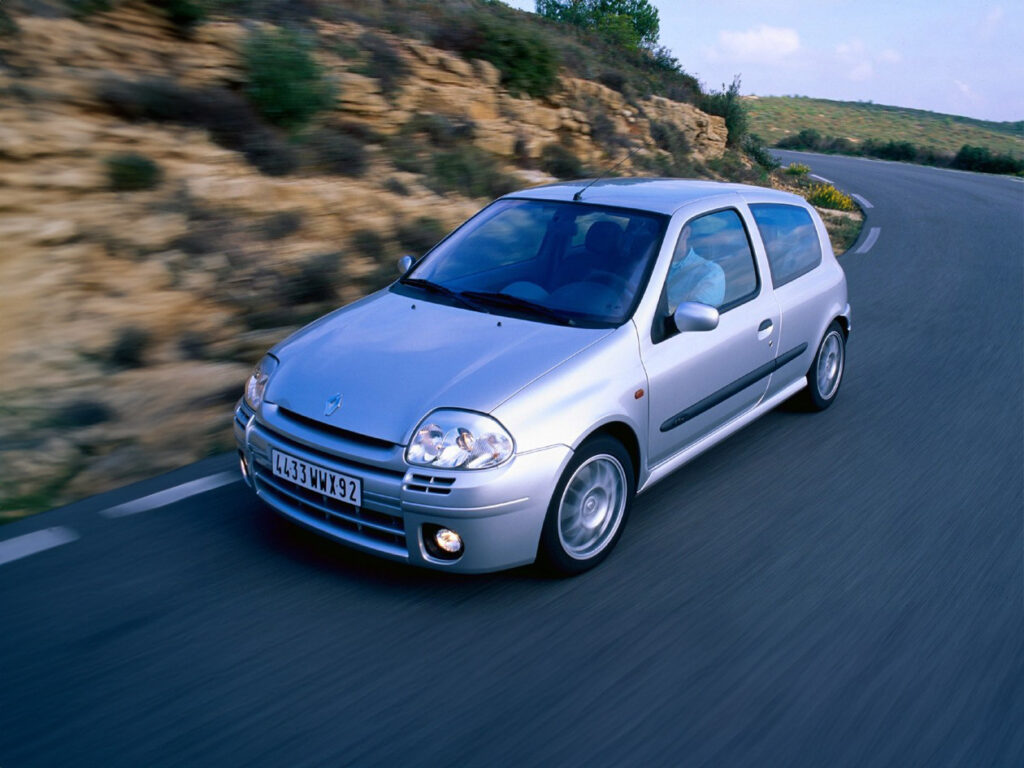
What to pay?
Once the cheapest, Phase 1s are now so rare that you’ll pay a premium for a low-mileage unmodified example. £2500 is your starting point, past £4000 for the best; £1500 for a project. Add 20% for the Exclusive model.
Phase2 172s and 182s are roughly in the same price bracket, but you have many more to choose from. The rare 172 Cup is difficult to find, so expect to pay upwards of £5000 for a mint example today. The limited edition Trophy is a level above, from £6500 for a higher-mileage car to upwards of £15,000 for a great example – although some have sold for considerably more.
